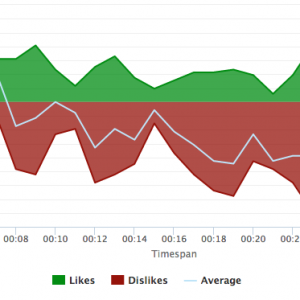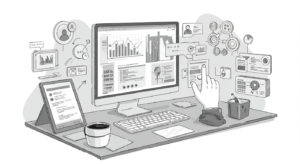What is Brand Tracking & Why Should You Use It?
Brand tracking is the process of gathering data from your target audience on a regular basis and analyzing performance over time. While brand tracking companies use to assess a brand’s overall health, they also examine the numerous aspects that make up that brand. Brand tracking considers a variety of factors, including brand recognition, loyalty, and other customer associations.
Brand tracking enables businesses, organizations, and universities to better listen to their customers and, as a result, make better growth-oriented decisions. This blog will look at what brand tracking entails, the benefits it provides, who it’s appropriate for, and the influence it may have. We also go over how to set up a brand tracking campaign that works.
Benefits of Brand Tracking
- Determine overall brand health.
Six essential brand tracking indicators will help you get a full view of your brand’s health. Awareness, impression, prior usage, preference, purchase intent, and Net Promoter Score (NPS) are the six key brand tracking metrics to consider. We can gain a more profound knowledge of how customers interact with your brand by measuring each of these variables, such as the influence your messaging has on purchasing behavior or the relative strength of competing brands.
You can better understand your brand’s overall health by following these indicators and paying attention to what data points come in. This knowledge will assist you in answering queries such as: Has anyone heard of us? Who is buying our goods and who isn’t? What do our clients think about us? You may decide that it’s time to rethink your message strategy, marketing initiatives, or even your entire brand based on the responses to these questions.
- See the impact of new product launches and key events.
A new product launch or participation in a large-scale event are suitable methods to raise brand recognition and engagement. They can, however, be two definite methods to wreak damage to your brand’s reputation if done incorrectly.
Remember that building and maintaining a good brand is a two-way street between your company and its customers; you don’t want to overlook their feedback. To avoid blunders, conduct qualitative research before and after a product launch or major event. Throughout the research, refining, testing, and post-launch phases, strong brands keep track of crucial KPIs.
Brand Tracking Is Always Suitable
Everyone with a brand – and everyone who wants to make a real difference with an offering or a mission – may benefit from listening to the people they want to help. This is when brand tracking comes in handy. There may be a shortage of available funding and resources for a new start-up organization. Furthermore, the new product or service may lack a significant historical record against which to compare performance.
Organizations with a multi-brand portfolio may find brand tracking challenging to maintain for similar reasons, as they may lack the resources required to track all brands successfully. It is possible that they would instead focus on their leading “money maker” brands. Even if the tracking is done in a simplistic way using basic data collecting, it may be valuable to even the tiniest start-up organization.
The Results
The tracking does not provide any outcomes in and of itself; it is what you do with the information gleaned from the tracking that matters. The information you gather becomes a rear-view mirror. Just because you did well on a metric one month does not guarantee that you will do so again the following month.
The world we live in is disrupted: new competitors, new consumer requirements, and improved technology can all contribute to your audience forgetting about you. It is highly recommended that brands utilize tracking in conjunction with meaningful engagement with their audiences.
You must put yourself in their place and continue to assist them in solving their difficulties, demonstrating to them that you (and they) truly believe in what you believe in. This is when your data from the rear-view mirror becomes a proactive endeavor. The question of “How can we make our audience stronger tomorrow?” should be on our minds all the time.
How does brand tracking affect future decisions?
Brand tracking can help with anything from customer retention to uplift, profit, and market share. It enables brands to communicate a single message that emotionally connects with their target audience. It provides a high degree of market intelligence that can be used to inform future marketing initiatives and product or service development.
Brand tracking can assist you in seeing if what you’re doing is increasing the size and perception of your audience. If you’re doing anything that’s negatively impacting your audience’s perception, you should either stop or change what you’re doing. Similarly, if you launched a specific campaign last quarter and saw your tracking results improve, you might want to continue. If you use the data you acquire well, you will undoubtedly see a more robust, more extensive following over time.
This highlights how important it is to keep track of brand positioning, usage, and delivery. Brand tracking can be a valuable tool for gaining a competitive advantage if a consistent, legitimate, and reliable technique is used. It also notifies an organization when brand support should be terminated due to economic or other considerations. However, if the approach used generates incorrect data, the results can be terrible for a brand and an organization.
Conclusion
For analyzing and monitoring performance, a frequent assessment of the brand’s health is critical; with this information, brands can make educated decisions that support their long-term objectives. While it is a beneficial tool for most firms, it may be too costly for start-ups or businesses with multiple brands. It is possible to undertake this research in-house, but doing so effectively requires devoted resources and experience.
The most powerful and insightful way to understand your brand is to combine a strong brand strategy with brand tracking. Customers should be invited to focus groups on talking about your brand, what it stands for, and what it means to them. If you do this once a quarter with a small focus group, you might discover valuable insights.







